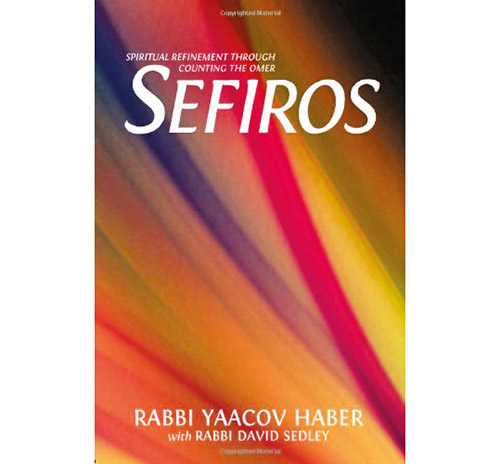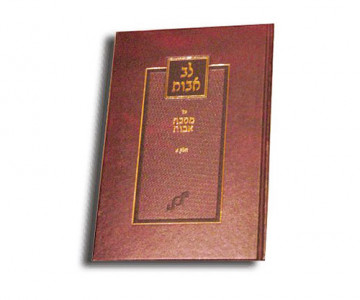
Reviewing: “Sefiros: Spiritual Refinement Through Counting the Omer” by Yaacov Haber. Judaica Press. 2009. English. Hardcover. 154 pages. ISBN-13: 978-1607630104.
Buffalo native Rabbi Yaacov Haber has dedicated his life to spreading Torah to Jewish people of all levels of observance and belief. He served as a rabbi in the same city in which he grew up and worked to bring Jewish life to mostly non-affiliated Jews. He moved to Melbourne, where he served as the rabbi of a kollel, before returning to New York to work with the Orthodox Union and to head the Bais Torah congregation in Monsey. For the past 20 years, Haber has lived in Ramat Beit Shemesh in Israel, presiding over a community he founded of mostly English-speaking oleh that include full-time yeshiva students and IDF soldiers. His message of unity appeals to a broad audience, as do his works on Torah and Jewish thought.
Earlier this year, Mosaica Press released a brand-new edition of Haber’s popular work “Sefiros,” which was first published in 2008. A book for those seeking spiritual growth, “Sefiros” examines the period of counting the omer through a kabbalistic lens, as well as the metaphysical meaning behind each of the 49 days between Passover and Shavuot. Each day includes a teaching of the particular sefira or “the Kabbalistic energy of the day,” which Haber explains are spheres that represent different aspects of God’s interaction with creation. This daily teaching is accompanied by three short, practical exercises for interaction with God, others and oneself.

The book opens with the first week of the Omer, which is characterized by chesed or kindness. In the opening paragraph about the first week of counting he explains, “Chesed is not going beyond the letter of the law. It is going against what justice dictates should be done.” Each day of the first week of the Omer is a different type of kindness. The second day, known as gevurah, she-be-chesed or restraint with kindness, refers to a kindness that is restricted by boundaries. The practical exercise for this day with oneself is to look internally at one’s own skills and talents and to accept responsibility.
Each week of the counting of the Omer progresses towards malchut, what Haber calls “the goal.” Malchut, he writes, “corresponds to the seventh day of creation, the day of rest, revealing God’s dominion over the entirety of creation.” Exercises during this week deal with accepting others as they are, showing gratitude toward God, internalizing our role in this world as Jewish people, and more.
The inspiration for “Sefiros” came from Haber’s own fascination with kabbalah and how the world works. He began teaching Jewish mysticism in Buffalo. “There is very deep meaning to everything,” he explained. “The way God created the world and what our function is in this world, how things work and why things appear differently at different points of history.” He insists that when that meaning is revealed and people understand the deeper levels of law and observance, their daily lives become infused with greater purpose and they feel a sense of “chizuk” or empowerment.
The first edition of “Sefiros” was sold out shortly after its release in 2008 and has been reprinted 10 times. Over 15,000 copies of “Sefiros” have already been sold to date to individuals with minimal religious observance to heads of yeshivot. “Everybody needs to grow,” Haber added.
Reviewing: “Lev Avot” by Rav Yaacov Haber. Torah Lab. 2007. Hebrew. Hardcover. 142 pages. ISBN-13: 978-1583309674.
Another of Rabbi Yaacov Haber’s works that has enjoyed wide fanfare is “Lev Avot,” a book published last year by Mosaica Press which offers a comprehensive Hebrew commentary on the sages of Pirkei Avot, examining the environment they lived in and the philosophies of the time period that shaped their teachings.
In the book, Haber details all the sources we have of each sage mentioned in Pirkei Avot, drawing from a wide range of sources, including works of first century Roman historian Josephus and Talmudic sources. Beyond understanding the historical context during which each sage lived and taught, this work paints a picture of a particular generation and its teachings so that we can understand the wisdom of the sages of Pirkei Avot in a much more comprehensive manner.
There is a tradition to study Pirkei Avot during the counting of the Omer. In his introduction to “Lev Avot,” Rabbi Haber explains that the chapters of Pirkei Avot, which progress from an accounting of our acquiring of the Torah at Sinai as a gift to our acquisition of the Torah through one’s own efforts, are based on the seven Sefiras that correspond to the seven weeks of the counting of the Omer.
“Lev Avot” is enjoyed by a diverse audience, from secular academics in institutions of higher learning to full-time yeshiva students. It is the wisdom of these sages of Pirkei Avot that Haber says is so critical to understand today during the complicated times we live in. It is their words, he hopes, that can guide us through these times of disconnect and disunity and collapse of identity.
Haber insists that we are living during momentous times in the history of the Jewish nation and that the Jewish people must strive to be the best we can be. He hopes these two works will enrich the learning of his readers and inspire within them personal and spiritual growth.
Alisa Bodner is a Fair Lawn native who immigrated to Israel a decade ago. She is a nonprofit management professional who enjoys writing in her free time.









